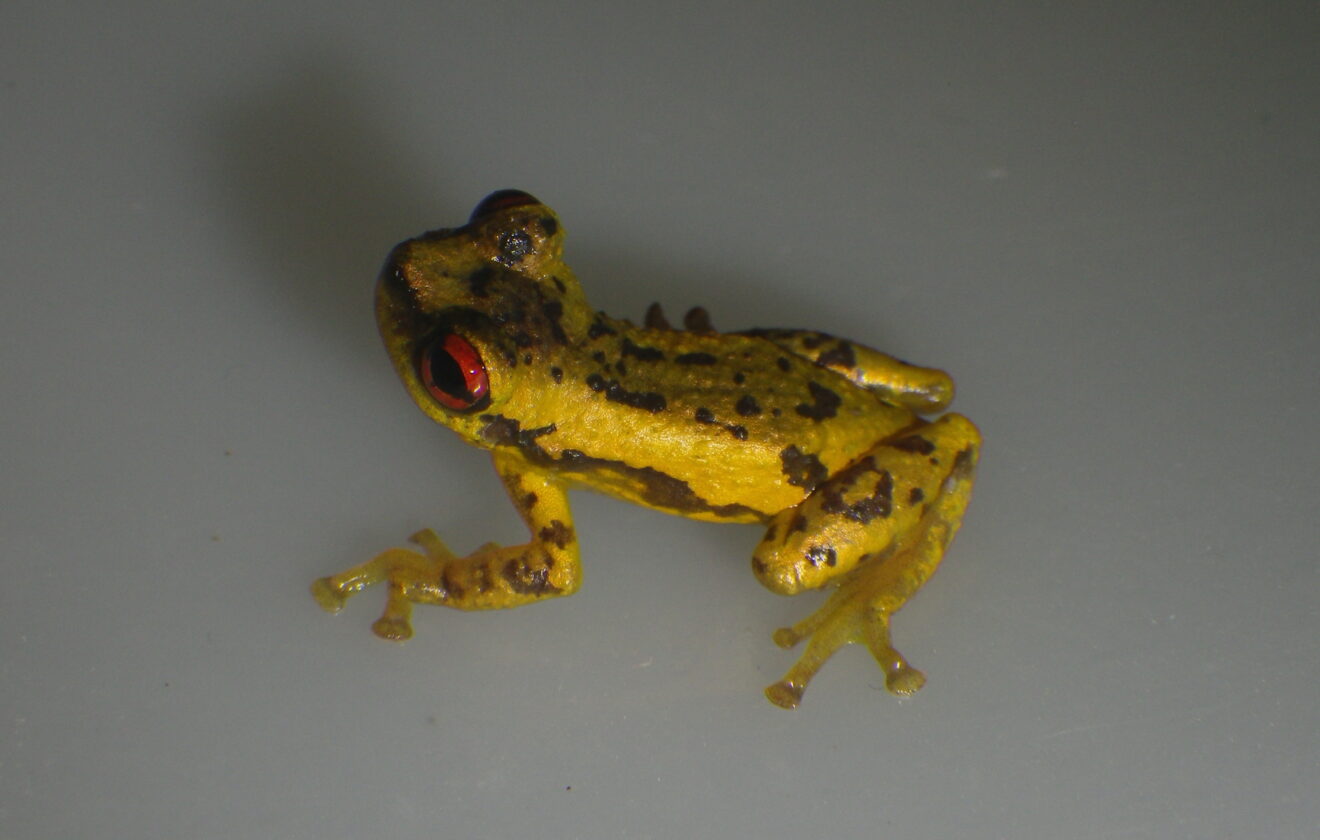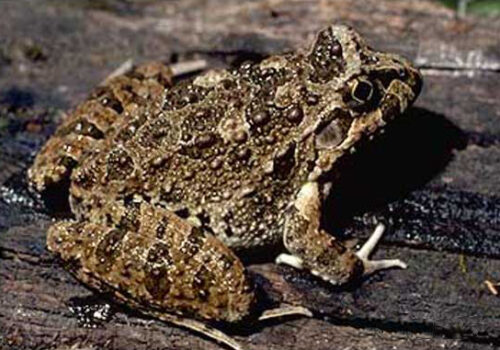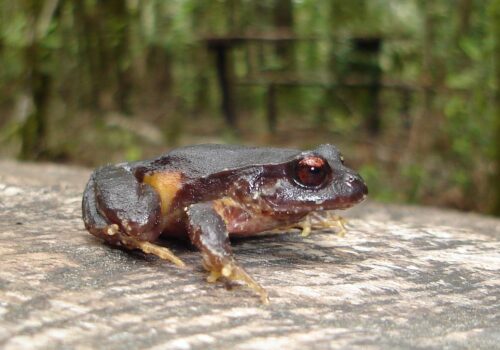Allophryne relicta: Exploring the Mysterious Relict Frog of the Amazon Forest#
Hidden deep within the dense, humid tapestry of South America’s Amazon rainforest lives a small amphibian cloaked in mystery and intrigue—the enigmatic Allophryne relicta. To the casual observer, this small frog may appear inconspicuous, yet it holds vital clues for scientists unraveling evolutionary puzzles, ecosystem health, and conservation strategies in our rapidly changing world.
The rare frog, scientifically known as Allophryne relicta, belongs to an exclusive lineage of amphibians that has fascinated scientists since its recent discovery. Remarkably, this species occupies habitats often largely untouched by human influence, appearing almost ghostly amid the lush greenery and vibrant biodiversity of its home. Despite the quiet manner of its existence, Allophryne relicta has started attracting attention due to its unique origins, elusive habits, and the growing pressures facing its delicate rainforest habitat.
This article invites you to take an immersive journey into the life and natural history of the Relict Frog, highlighting its significance in the broader tapestry of rainforest life and pointing toward sustainable futures to secure its preservation.
Taxonomy and Classification#
Allophryne relicta rests within the distinctive Allophrynidae family, which was for a long time notably confusing for herpetologists. First described recently in the scientific literature, in 2013, Allophryne relicta is a fascinating example of how nature still preserves corners of undiscovered biological treasure, hiding novel lineages from view even today. Its specific epithet “relicta” speaks directly to this unique evolutionary status—a relict species, isolated through geological epochs, lingering as if suspended in evolutionary limbo.
The genus Allophryne is itself intriguingly sparse, containing only a handful of closely related, yet genetically distinct, frog species. This genus’s evolutionary lineage diverged significantly from other Amazonian frogs millions of years earlier, making Allophryne relicta something of an ancient storyteller—a living shadow from the distant past, still quietly thriving under the rainforest canopy.
Natural Habitat#
The habitat of Allophryne relicta is, much like the frog itself, subtle and easily overlooked in the complexity of the Amazon rainforest. The species has been found exclusively within remote jungle regions of northern Peru, typically close to slow-moving tributaries and river networks sheltered by dense vegetation canopy. This hidden landscape, a maze of humid understory, sedge-filled clearings and lush foliage, creates exactly the kind of microhabitat the Relict Frog requires.
Unlike many well-known amphibians who frequent open stream banks, Allophryne relicta chooses the quieter, dimly illuminated forest floor, seeking out temporary ponds, pools, and gently inundated areas that form in the rainy season from December until May. These quiet waters help keep predators at bay and provide ample food sources, essential for the frog’s survival. The hidden nature of its habitat shelters the Relict Frog from undue competition or exposure, amplifying the species’ elusive reputation among biologists.
The very existence of Allophryne relicta here signals to researchers something crucial about its shifting rainforest home—the delicate balance of a stable environment maintained over countless generations. Scientists often classify frogs like Allophryne relicta as valuable indicator species because the persistence of a species with such specialized needs speaks to the broader health of entire ecosystems.
Physical Characteristics#
To visualize Allophryne relicta requires picturing a frog small enough to comfortably perch on the tip of your finger. Measuring only around 2.5 centimeters long, it sports a delicate, rounded body that blends effortlessly into its earthy habitats. Softly mottled in hues of olive-green, brown, and grey, the frog’s camouflage is undeniably impressive. Subtly speckled skin, occasionally adorned with intricate golden spots, mimics the surrounding lichens and mosses perfectly, illustrating nature’s craftsmanship at its finest.
Its round, prominent eyes are large relative to its tiny frame, perfectly adapted to capture the scant rays of sunlight that filter through dense leaves. Remarkably, rather than flashy coloration or overt defenses, Allophryne relicta depends heavily on crypsis—the art of staying hidden—tying intimately into its key survival strategy of quiet anonymity.
Physically adapted to its shaded microhabitat, this frog possesses minute suction pads at its fingertips, aiding it in efficiently navigating branches, stems, and leaves in its forest-world labyrinth. Such biological adaptations have evolved wonderfully to aid the species in casually traversing slippery rainforest flora—a vital ability for escaping certain threats or capturing hidden prey.
Behavior and Life Cycle#
A Quiet Life in the Shadows#
In its everyday life, Allophryne relicta conducts itself quietly, moving cautiously from shadows to dim patches of filtered sunlight. Limited daylight sightings indicate the species is predominantly nocturnal, becoming active shortly after sunset. During nights following heavy rains, males congregate around temporary forest pools, calling softly, a quiet rhythm that can easily fade into the symphony of other night time jungle sounds.
Dietary Habits and Feeding Strategies#
The feeding habits of Allophryne relicta largely align with its secretive nature. It feeds primarily on small arthropods, specifically targeting ants, termites, tiny beetles, and other microscopic invertebrates, that find themselves similarly cloaked within the leaf litter. Its hunting techniques leverage unparalleled stealth and patience, waiting almost immobile until prey ventures within striking distance—then suddenly snatching the unsuspecting insect in a lightning-fast motion.
Breeding and Development#
Breeding behavior remains insufficiently documented due to the species’ recent description. However, observations suggest a seasonal breeding pattern tied to the wet season. Temporary rainforest pools, vital nurseries for Allophryne relicta tadpoles, form the essential breeding grounds where eggs and subsequent larvae develop amidst the fallen leaf matter and fungi-rich substrates.
Tadpoles appear distinctly adapted for ephemeral ponds, growing rapidly and metamorphosing quickly as waters recede. This accelerated development time ensures they successfully transition to juveniles before their small aquatic nurseries vanish altogether, a brilliant adaptation sculpted by millions of evolutionary generations.
Ecological Role#
Despite its small size, Allophryne relicta is a crucial actor within its ecosystem. Serving as both predator and prey, this frog contributes to nutrient cycling and assists in regulating insect populations. Its role as an indicator species cannot be overstated—its sensitivity provides valuable clues to wider ecosystem dynamics, signaling subtle shifts due to climate change, habitat degradation, or emerging diseases.
Allophryne relicta is preyed upon by snakes, larger frogs, small mammals, and birds, thus linking different trophic levels together. Maintaining healthy populations of amphibians such as this is essential for the ecological success of countless species, ensuring balanced biodiversity throughout the forest ecology.
Threats and Conservation Status#
Currently, the International Union for Conservation of Nature (IUCN) classifies Allophryne relicta in the Data Deficient category. This status reflects a lack of sufficient available data regarding its population size, distribution scale, and specific threats. Despite this uncertainty, habitat loss due to expanding agricultural borders, logging activities, and climate change-driven droughts remain serious ecological threats rapidly encroaching on its Amazonian home.
Given their small geographical range, these frogs are vulnerable to rapid extinction events in response to environmental pressures. Conservationists stress that protecting Amazonian habitat, curbing deforestation, and supporting scientific exploration are essential steps in safeguarding Allophryne relicta and its naturally vibrant home.
Cultural and Scientific Significance#
The recent discovery of Allophryne relicta echoes the boundless richness of Earth’s biodiversity. Scientifically, the existence and persistence of these frogs indicate hidden evolutionary pathways still ripe for exploration. Each species discovered brings potential knowledge to medicine, ecology, and evolutionary biology, reiterating the immense value inherent in exploring and protecting wild places.
Culturally, frogs consistently feature in indigenous Amazonian folklore, symbolizing renewal, health, and natural balance—elements vital to our understanding of ecosystems and habitats that sustain human and non-human lives alike.
Conclusion: Safeguarding Nature’s Hidden Wonders#
Allophryne relicta, the Relict Frog of the Amazon, embodies nature’s profound mystery and resilience. As habitats shrink and pressures mount, the plight of this small amphibian reminds us of our collective responsibility to preserve intricate, vulnerable ecosystems that sustain life in all forms.
We encourage readers to further explore amphibian conservation and consider participating in habitat protection efforts. Discover related conservation initiatives or learn about other fascinating frog species such as the widely studied Glass Frog or vital efforts focused around the Amazon rainforest conservation. Together, we can champion the survival of nature’s unique stories, a legacy essential for generations to cherish.









